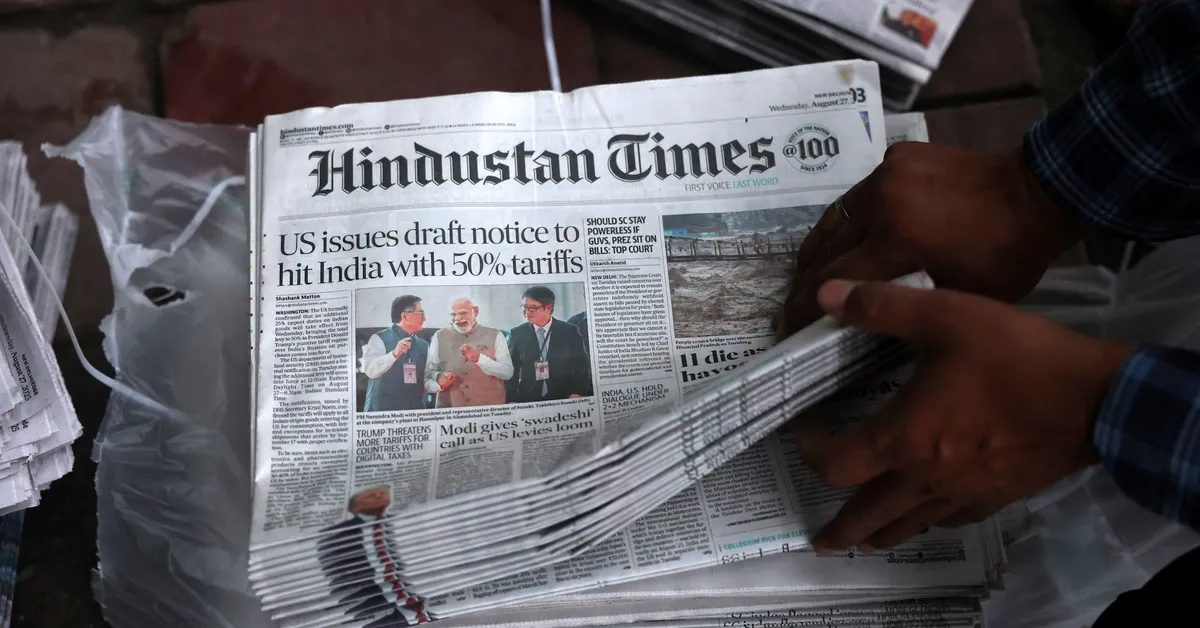
On August 27, 2023, U.S. President Donald Trump implemented a significant escalation in trade tensions by doubling tariffs on goods imported from India to as high as 50%. This move represents a critical juncture in the relationship between the two largest democracies and strategic partners in the world. The new tariffs, which include a punitive 25% duty on goods associated with India's purchases of Russian oil, add to the existing 25% tariff imposed on numerous products from India.
The increase in tariffs brings the total duties on various Indian goods, including garments, gems and jewellery, footwear, sporting goods, furniture, and chemicals, to as high as 50%. This level of tariffs is among the most severe imposed by the U.S. and is comparable to those faced by countries like Brazil and China.
The ramifications of these tariffs could be dire for thousands of small exporters and jobs in India, particularly in Prime Minister Narendra Modi's home state of Gujarat. In response to these challenges, an official from the Indian Commerce Ministry, speaking anonymously, indicated that affected exporters would receive financial assistance. Furthermore, they would be encouraged to explore diversified markets in regions such as China, Latin America, and the Middle East.
Certain products have been exempted from the new tariffs, including steel, aluminum, and their derivatives, as well as passenger vehicles and copper, which are subject to separate tariffs under the Section 232 national security trade law. According to India's trade ministry, the average tariff on U.S. imports stands at approximately 7.5%. In contrast, the U.S. Trade Representative has noted that tariffs on U.S. farm goods can reach as high as 100% on automobiles, with an average applied rate of 39%.
As the midnight deadline for tariff implementation loomed, U.S. officials offered no indications that India could avoid the tariffs. White House trade adviser Peter Navarro confirmed that the increased tariffs on U.S.-bound exports from India would take effect as planned. This decision follows five rounds of unsuccessful negotiations, during which Indian officials had expressed hope that tariffs could be limited to 15%, similar to rates granted to major trading partners like Japan, South Korea, and the European Union.
Both sides attributed the breakdown in talks to political misjudgments and miscommunications. The trade relationship between the U.S. and India is significant, with two-way goods trade reaching $129 billion in 2024, contributing to a $45.8 billion U.S. trade deficit, according to data from the U.S. Census Bureau.
Exporter groups have estimated that the tariff hikes could impact nearly 55% of India's $87 billion in merchandise exports to the U.S., potentially benefiting competing nations such as Vietnam, Bangladesh, and China. Prolonged tariffs at this elevated level could undermine India's growing reputation as an alternative manufacturing hub, particularly for electronics and smartphones.
The ongoing standoff between the U.S. and India raises critical questions about the future of their bilateral relationship, especially as both nations are key security partners concerned about the rise of China. However, on the day prior to the tariff announcement, the U.S. State Department and India's Ministry of External Affairs released identical statements highlighting continued discussions between senior officials from both governments. These meetings emphasized a mutual commitment to enhancing the depth of their bilateral relationship and reaffirming their dedication to the Quad partnership, which includes Australia and Japan.